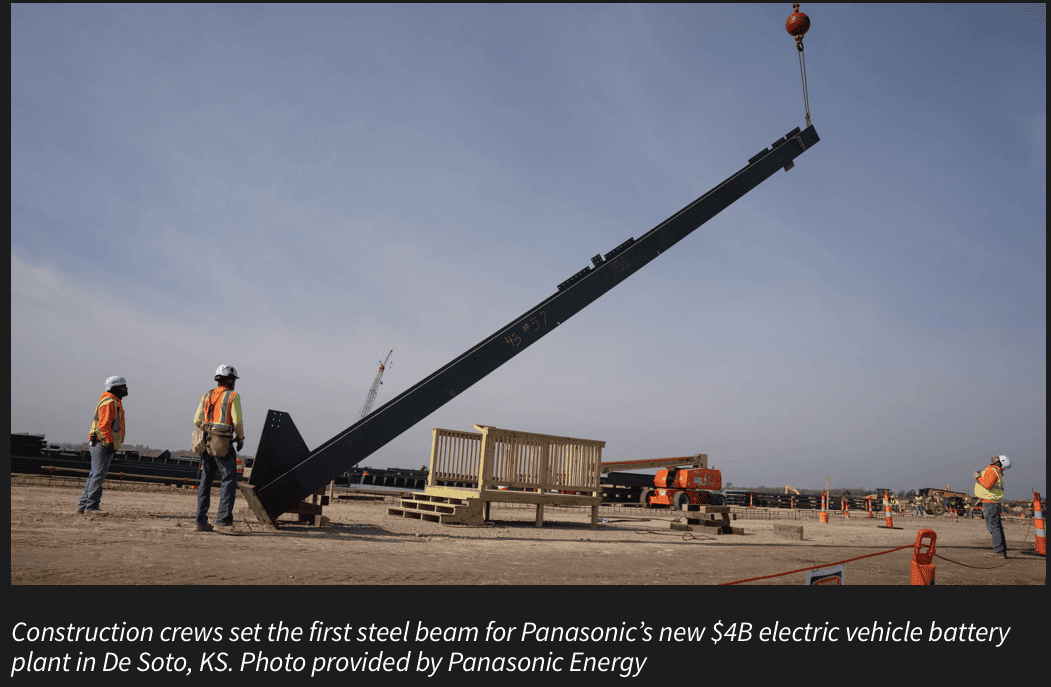The Kelly/Toland administration told Kansas legislators they had to approve nearly $1 billion in subsidies to ‘win’ the competition with Oklahoma for a $4 billion Panasonic electric vehicle battery plant. But now we know that the Sooner State secured a $5 billion plant with less incentives that only kick in with when job and investment targets are hit.
According to the Tulsa World,Panasonic must qualify for the taxpayer incentives for the plant to be located in Pryor. The company can receive $698 million in subsidies if it invests at least $3.6 billion in the plant and creates 3,500 jobs within four years. Employees will earn salaries over $52,000 yearly under the contract.
The company’s deal with Kansas last year, celebrated by Governor Laura Kelly as “transformative for our state’s economy” as she campaigned for re-election, promised at least $829 million in state taxpayer money in exchange for a $4 billion investment and 4,000 new jobs. But the Kelly/Toland administration’s agreement with Panasonic does not require any minimum investment or job creation threshhold to get the subsidy money.
Panasonic is still asking Oklahoma to pay $245 million for infratstruce improvements, but even if that occurs, Oklahoma taxpayers will spend less than Kansas on a dollar-per-money-invested basis.

Companies like Panasonic are happy to take the money, but research indicates that subsidies often don’t produce the desired results. A study of the state’s PEAK program (Promoting Employment Across Kansas) by Professor Nathan Jensen found that PEAK recipients were no more likely to create jobs than non-PEAK recipients. Dr. Arthur Hall of the University of Kansas reached a similar conclusion in a study of STAR bond projects in Wichita.
Further, even if the Kelly/Toland administration’s promise of 4,000 jobs came true, that would be an increase of 0.34% over current private-sector employment. That is hardly ‘transformational.’
Instead of government “picking winners and losers” in doling out taxpayer money for incentives, tax reform is a more efficient way for the private sector to create jobs.
For example, the states that don’t have an income tax increased private-sector employment by 57% between 1998 and 2021, compared to just 25% in the states that tax income. Nine states do not impose a income tax: Alaska, Florida, Nevada, New Hampshire, South Dakota, Tennessee, Texas, Washington, and Wyoming.
Subsidies also carry with them “dis-incentives” for job creation:
- No similar tax relief for existing businesses, including competitors of those receiving the taxpayer money
- Decreased likelihood of individual tax cuts. Kansas taxpayers lost out again this year
- The Panasonic deal could result in higher property taxes for Johnson County residents, as more people bid up home prices to be closer to work, and assessed values increase


